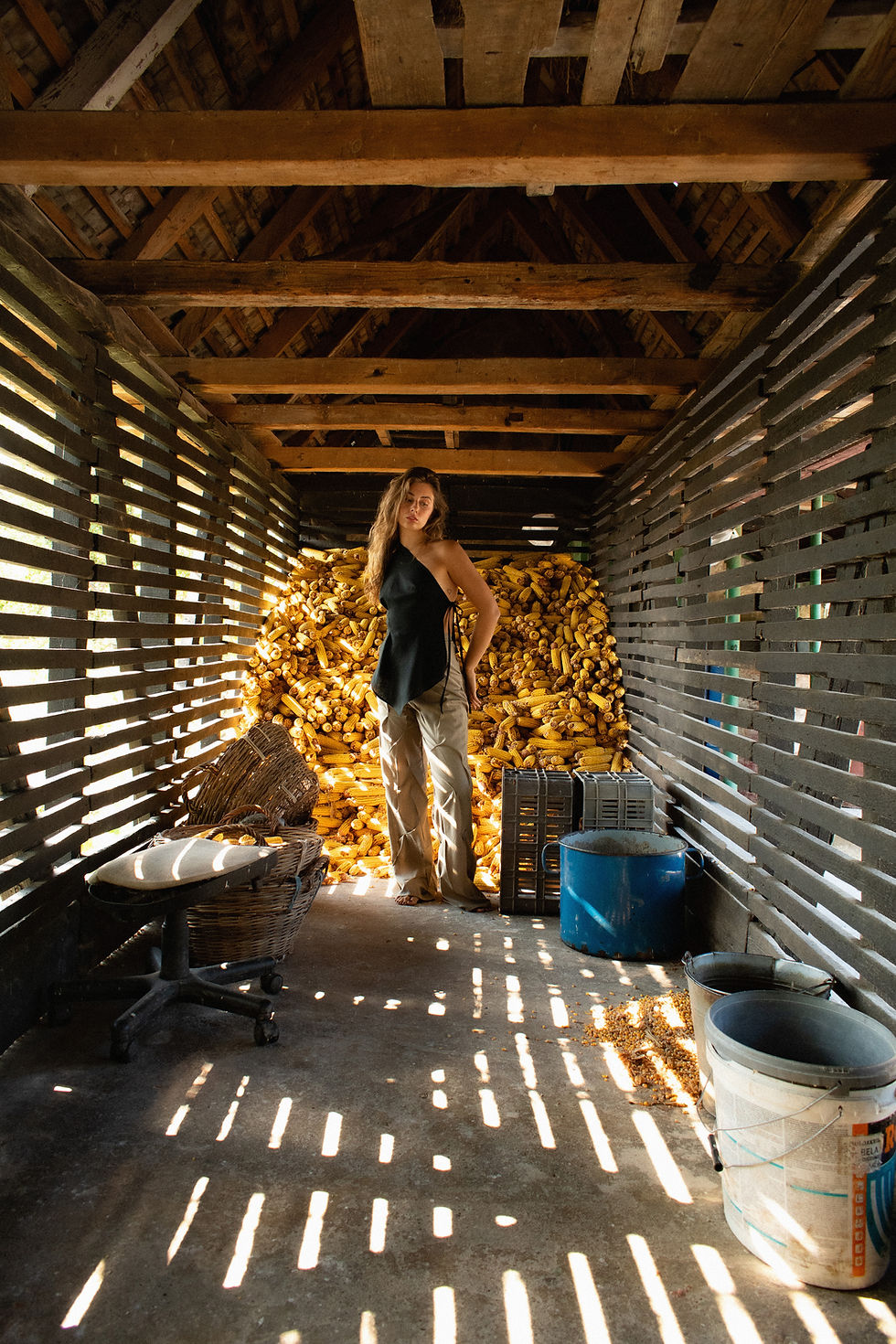Ognjen Marković: Kalupi (Molds)
- Savina Ražnatović
- Apr 29
- 4 min read
Certain gestures start out as rejections. Ognjen Marković's character in Kalupi are more symptoms than individuals; they are expressions of generational dread, deferred agency, and structural exhaustion. They live in environments that are a visual language of boxes, cells, and dead ends that are neither entirely architectural nor fully psychological. These dismal grid-bound paintings map the landscape of the body's silent fatigue, if the body is the first place of inscription under late capitalism.
Drawing squares repeatedly to fend off the fear of the blank canvas was the series' first act of necessity rather than an original idea. This small gesture gave rise to compositions that prioritize the texture of stasis over narration. The figures, oversized in proportion to their cramped environments, suggest not monumentality but claustrophobia. Their surroundings press back against them, curling their limbs inward. The size of the figures seems out of proportion to the space at hand. Their scale is less monumental than claustrophobic; the rooms too small, the exits implied but never seen. Their surroundings push back on them, forming their features and causing their limbs to curl inward. The artist notes that this was an instinctive reaction rather than a purposeful metaphor. However, their compression and hunching reveal bodies molded by imperceptible procedures—architectures of economic precarity, institutional pressure, and expectation.
The title Kalupi points to an object that by containing another shapes it. Though Marković’s molds are unruly, unstable, and its psychological profile differs from the homogeneous reproductions of traditional methods. These bodies have already been made and processed; they are not bodies seeking release. Paper bags covering heads in early paintings act as formal leveling, a rejection of specificity, or maybe a protection against recognition, rather than as a narrative device. Both identity erasure and generalization occur. The numbers belong to a group of young people who were trained to perform rather than to feel, not to themselves.



It's important to note that Marković avoids direct criticism. These paintings don't stage insurrection or attempt to reveal an adversary. Systems of labor, education, and bureaucracy are not depicted directly, but they remain palpable throughout. He points out that "all of these systems have shared mechanisms of control." These systems are unknown to the Kalupi figures. Blind to the scripts that control them, moving within them. Perhaps the most unsettling aspect of these pieces is that capitulation is labeled as ordinary rather than any sense of struggle.
Color functions in tandem. The palette mostly stays within the earthy brown and gray tones, which are not very noticeable. They imply silt, weariness, and dust. According to Marković, this subdued range developed organically before being chosen as a compositional element. These colors blend in with deterioration rather than representing it. They flatten rather than exaggerate, they absorb rather than announce. Despite this, the paintings are not wholly gloomy. The arrangement of these forms conveys a sense of care and attentiveness. The rooms are cramped but not explicitly punitive; the bodies are twisted but not disfigured. There is no moralizing in the works. They observe. They capture a moment of generational articulation, when the shift from play to discipline, from hobby to vocation, displays stagnation rather than empowerment.
It is easy to interpret Kalupi as a metaphor for neoliberal regulation, psychological standardization, and surveillance society. Although such readings are possible, Marković does not insist on them. He describes the paintings as "mental provocations—images that leave residue rather than answers," emphasizing that "the viewer does not owe themselves interpretation, only the experience of having encountered it." Kalupi thus provides neither a message nor a solution. Rather, it encourages a form of interaction in which the spectator transforms into another body inside the frame, attempting to identify the features of their own confinement.
The numbers remain constant. No escape, no rupture, no narrative arc. After three central paintings, the series comes to an end. Attempts to extend it led only to sketches that felt redundant, a decision that acknowledges a different kind of rigor: the refusal to overproduce. This is also a form of resistance, though a calculated one.All that is left is a picture of artistic development under pressure. Not just in terms of educational institutions, but also in terms of the larger societal apparatus that transforms desire into output and output into fatigue. This method is made visible in Kalupi without requiring a name. It is a discreet charting of shape under stress, a rejection.
Ognjen Marković (b. 2001, Cetinje, Montenegro) is a contemporary artist whose practice explores social dynamics and internalized systems of control. He graduated from Tehnoart Secondary School in Belgrade, specialising in Jewelry and Artistic Objects, and earned his degree in painting at the Faculty of Fine Arts in Belgrade. Marković has participated in significant exhibitions such as April Meetings at the Great Gallery of the SKC, Belgrade (2025); the Youth Biennale at the ULUS Gallery, Belgrade (2023); Roll the Dice at Belimarković Castle, Vrnjačka Banja (2023); and Being Present at the Cvijeta Zuzorić Pavilion, Belgrade (2021). His work critically investigates how structures such as labour, environment, education, family, and the state shape interpersonal relationships and community dynamics. Marković’s art focuses on the tensions between conflicting forms of subordination and the internalised mechanisms societies develop to suppress questioning of individual positions within established frameworks. He lives and works in Belgrade.






Comments